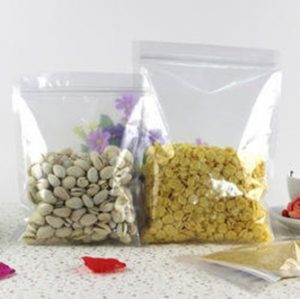

A heat sealer is the most important instrument in the flexible packaging industry. There are 2 types of laboratory heat sealer.
One, that is used for sealing the flexible packings. Second, which is used for sleeve wrapping.
Sealing is done by two principles; One, where plastic is melt to the point that it forms a uniform bond to create the seal. Second, when there is sealant on one side of the material to be bonded together. The heat of the sealer activates the sealant to form the bond together.
For a layman, anything that could bond the two sheets together is the perfect machine. For an industry expert, there are many things which are considered before investing in this instrument for flexible packaging
Sealing temperature. It is important to know that at what temperature range this device works efficiently. The material used in flexible packaging should withstand temperature range. The thickness of packaging material also defines the range of temperature required for sealing. Therefore, it is important to choose a testing machine that has wide temperature range. If heat sealer and bursting strength tester are used hand in hand, they give outstanding results. Bursting strength tester checks, if the seal has the ability to bear the simulated real-time environmental pressure.
Dwell time. It is defined as the time taken by the heating elements to come together to form the bond. It seems an unimportant factor, but for large manufacturing line, it matters a lot. The difference of a second can change the final output of packets by a large number. Apart from this, dwell time has a considerable effect on the seal strength, and it is always different from actual dwell time. It is important to know that if the heat sealer machine calculates travelling time of jaws along with the time for which heating contacts remain together. Other dwelling time required to form a leak proof seal has to be calculated manually.

Sealing Pressure. Lab heat sealer applies temperature and pressure, both, to form a leakproof seal. To keep the contents of packets fresh and intact, it is important that ample temperature and pressure is applied to the seal. This is one important factor, else, the resultant would have leaked seals with low bursting strength. Uneven sealing is another aftereffect of poor pressure application. If appropriate pressure is being applied to the heating contact, it will distribute the heat evenly throughout.
Having all these points considered would help in investing into right machine. A good heat sealer machine gives strong peel able seals that can withstand with real-time conditions.
Related Blogs

A Tensile Tester is designed to pull a material sample until it breaks. It helps engineers measure important properties like tensile strength, elongation at break, yield point, and more.

UV Chamber simulates sunlight to test material durability against UV rays, helping ensure long-term quality and resistance to environmental damage.

Salt spray test checks corrosion resistance of materials using a salt spray chamber. Essential for quality control in coatings, metals, and finishes.